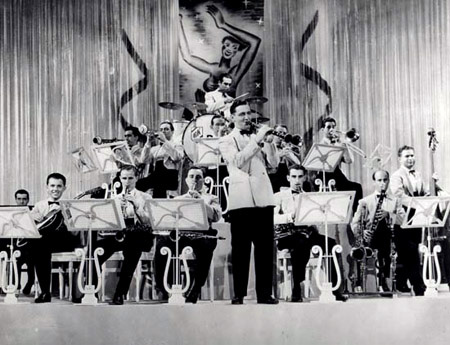Swing Jazz
(1934-1945)
The swing era: big bands (with more than 10 performers), in large ballrooms, for dancers and jitterbugs. Swing provided an escape from those political and social pressures due to the Great Depression, triggered by the Wall Street Crash of 1929.
Whilst you enjoy the following music, see if you could identify its arrangements and jive/mellow:
* the “jive” (hard jazz) swung hard
* the ballads (tender love songs) were “mellow”
* Sing, Sing, Sing again
The Benny Goodman Story (1956) is a very good movie, with a very good love story. I recommend it to you.
* In the movie Goodman also played the Mozart Clarinet Concerto
* The Blues Are Brewin' with Satchmo
* Gloomy Sunday --- The Hungarian Suicide Song
* Misty
= = = = =
Notes:
* saxophone (or, sax) – 3 to 5 – players often double on clarinet or flute
* trombone – 3 to 4 – using mutes
* trumpet – 3 to 4 – using mutes
* rhythm – piano, string bass, drums, rhythm guitar
* tutti – all brass (trombone, trumpet) and reed (sax, clarinet) sections to plat together to create a unified texture
* soli – one section (e.g. saxes) playing together, accompanied only by the rhythm section
* shout chorus – integrates the soli activities at the climax
The most common arrangements:
* the saxes to state a melody while the trumpets play short rhythmic chords (shouts)
* the trombones either join the trumpets in the shouts, or supply a counter-melody to the saxes – usually near the end of an arrangement.
How the rhythm section swings









No comments:
Post a Comment